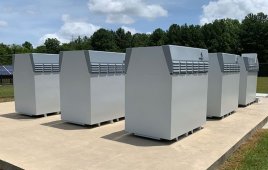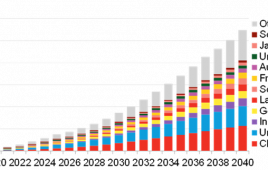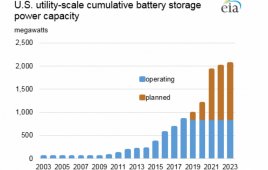During a recent tour of Veolia’s existing Trenton Thermal Energy District Network, New Jersey Board of Public Utilities (Board) President Richard S. Mroz announced that the Board’s Town Center Distributed Energy Resource (DER) Microgrid program is funding feasibility studies for 13 separate proposed town center microgrids across the state.
The Trenton Network would serve as the technology hub for one of the 13, and a proposed Downtown Trenton Microgrid. It would connect and allow critical facilities within the microgrid to remain operational, while the grid is down and also offer increased energy efficiency.

The New Jersey Board of Public Utilities is furthering the State Energy Master Plan’s priorities of improving energy resiliency and increasing the use of DER microgrid technologies by funding 13 Town Center DER Microgrid feasibility studies.
Background
In the aftermath of Superstorm Sandy, the Christie Administration made it a priority to improve energy resiliency and the emergency preparedness and response of the utility companies.
As a result, the EMP 2015 Update contained a new section on hardening and improving utility infrastructure resiliency, which supports the establishment of DER (such as microgrids) to improve the grid’s resiliency and reliability in the event of a major emergency.
The Update also directed the Board to continue its work with the utility companies, local, state and federal governments, and other strategic partners to identify, design, and implement Town Center DER microgrids to power critical facilities and services across the state.
Trenton Microgrid
“I’m excited to get the feasibility studies started for this Downtown Trenton Microgrid and the other 12 proposed microgrids as the final reports will provide great detail on options concerning designs, connections, financing options and the types of buildings to be included in a town center microgrid,” said President Mroz.
“As these town center microgrids are developed around the state, communities will have the power and freedom to keep critical facilities such as hospitals, police and fire stations, water and wastewater treatment plants and buildings used to shelter residents operational and running independent of the grid during emergencies,” he added.
The N.J. Department of the Treasury, Division of Property Management and Construction, along with Mercer County, the Mercer County Improvement Authority and the City of Trenton, filed an application for a feasibility study for the proposed Downtown Trenton Microgrid.
“A distributed generation facility in downtown Trenton would improve resiliency by reducing the potential for grid failures related to major weather events or other causes from impacting critical government services,” said Golubinski.
The Trenton microgrid would connect the N.J. Justice Complex, the N.J. State House, N.J. Treasury Taxation Building, N.J. Department of Labor Building, N.J. Department of Health Building, N.J. Department of Community Affairs – Ashby Building, N.J. Department of Human Services – Capital Plaza One Building, N.J. Department of Environmental Protection Building, N.J. Treasury – Mary Roebling Building, NJ Motor Vehicle Commission Building, NJ Network Building, Old Barracks, Thomas Edison College and the NJ War Memorial.
The Downtown Trenton Microgrid would help to secure financial, legal, and industrial data and records in the Taxation, Justice and Labor Buildings. Along with enabling continued government services, the microgrid would power, heat, and cool buildings that could serve as assembly areas or emergency shelters.
“Veolia is proud to support the state’s resiliency efforts and join in partnership to develop and maintain a microgrid that provides dependable power to critical buildings in the event of extreme weather or other disaster,” said John Gibson, president and COO of Veolia North America’s Municipal & Commercial Business. “Partnerships of this nature allow the state to focus on its core business of providing services to residents while Veolia delivers utility infrastructure and resiliency.”
The Board established a Town Center Distributed Energy Resource Microgrid Feasibility Study program with a budget of $1 million. However, on June 30, 2017, after receiving and evaluating 13 applications for proposed microgrids and the potential benefits offered, the Board approved a budget modification to fund all 13 applications at a total cost of $2,052,480. The program was developed to provide incentives for local and state government agencies to study the feasibility of Town Center DER microgrids.
Filed Under: Energy storage




